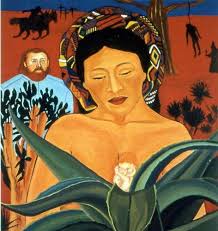War

Dona Marina, Cortes’ Translator: Painting, Santa Barraza
A representation of Malinche painted by a renowned Chicana visual artist and teacher from Texas. It depicts the beautiful, life-giving Malintzin, is a tiny image, crafted on metal, and meant to evoke ex-voto and other devotional images from Mexico.
The Soviet withdrawal from Afghanistan
On 25 December 1979, the Soviet Union deployed its army in Afghanistan, in support of the Afghan Communist government against a group of Muslim opponents.
Provision for the Restatement of Names and Surnames
Images of 1989 tend to center on dramatic events in Berlin, in Beijing, in Bucharest, and in Johannesburg, just to name a few. Visions of mass demonstration and popular uprising predominate.
UN Security Council on the Civil War in Yugoslavia
In 1990, the Yugoslav Communist Party divided into several separate parties, one for each of the six Yugoslav Republics. Tensions among the ethnic groups of Yugoslavia, divided among the republics, led to an outbreak of a civil war in 1991.
United Nation's Evaluation of the Peacekeeping Process in Yugoslavia
In 1990, the Yugoslav Communist Party divided into several separate parties, one for each of the six Yugoslav Republics. Tensions among the ethnic groups of Yugoslavia, divided among the republics, led to an outbreak of a civil war by 1991.
Peace for Afghanistan
On 25 December 1979, the Soviet Union deployed its army in Afghanistan, in support of the Afghan Communist government against a group of Muslim opponents.
British Empire: Autobiography, Mary Seacole
In 1857, only 24 years after the British had abolished slavery in the empire, Mary Seacole (1805-1881) published her autobiography entitled the Wonderful Adventures of Mrs. Seacole in Many Lands.
The Battle of Waterloo as Recounted by one of Napoleon’s Personal Aides (June 1815)
Jardin Ainé (the elder) was responsible for Napoleon’s horse and had a firsthand view of the momentous events that definitively ended Napoleon’s career.
The Russian Campaign as Seen by a Female Russian Soldier
Fighting under the name Alexander Durov, Nadezhda Durova was the daughter of a Russian officer who dressed as a man to join the Russian army in 1806. Although it became known that she was a woman, she was allowed to serve until 1816 when she retired as a captain of the cavalry.
The Russian Campaign as Seen by an Ordinary Soldier
Adrien-Jean-Baptiste-François Bourgogne (1785–1867) was the son of a cloth merchant from northern France. He fought in Poland in 1806; in Austria, Spain, and Portugal in 1809–11; and in Russia in 1812–13. His memoirs were first published in 1857.